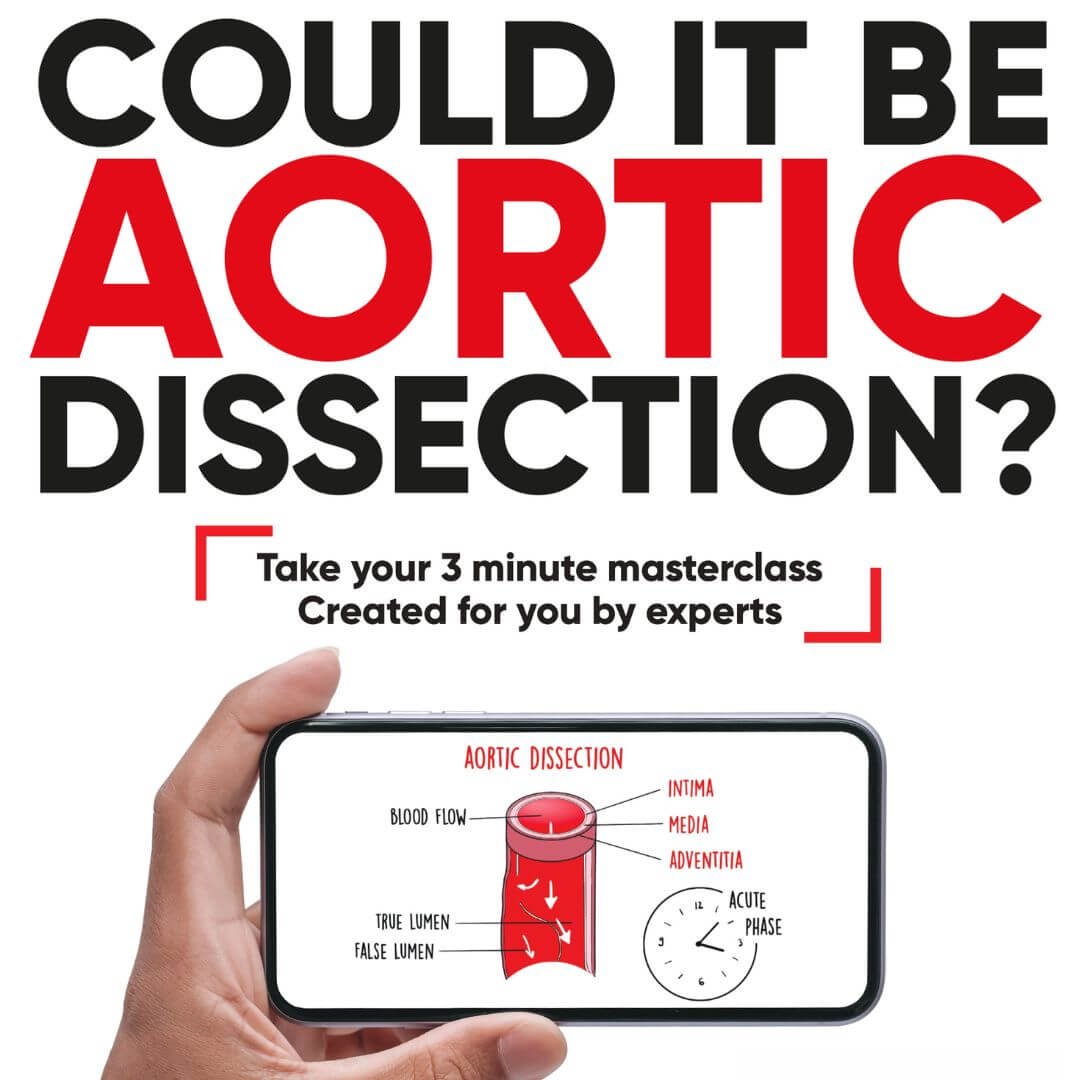The Aortic Syndrome Evidence Synthesis (ASES) study, led by Professor Steve Goodacre from the University of Sheffield, aims to improve the diagnosis of acute aortic syndrome (AAS). Collaborating with the Aortic Dissection Charitable Trust research panel, including family member Catherine Fowler and survivor Valérie Lechene, the study explores alternative diagnostic strategies to enhance patient outcomes.
Understanding Acute Aortic Syndrome
The ASES study investigates various diagnostic tests to determine their accuracy in identifying patients with possible acute aortic syndrome who require a CT scan. Acute aortic syndrome is challenging to diagnose due to common symptoms like chest pain, which can have multiple causes. Annually, approximately 300,000 patients visit emergency departments with chest pain, but only a small fraction suffer from acute aortic syndrome.
Methods of Diagnosis
Aortic Dissection Detection Risk Score (ADD-RS)
Diagnosing acute aortic syndrome requires a specialised CT scan. However, performing CT scans on all patients with chest pain is neither practical nor cost-effective. The ASES study evaluates several tests to identify suitable candidates for CT scans, focusing on two promising methods: the Aortic Dissection Detection Risk Score and the D-dimer blood test.
The Aortic Dissection Detection Risk Score assesses a patient’s risk based on their medical history, pain characteristics, and physical examination findings. The score ranges from 0 to 3, with higher scores indicating greater risk. Factors contributing to the risk score include:
- Medical History: Marfan syndrome, family history of aortic syndrome, aortic valve disease, recent surgery, thoracic aortic aneurysm (1 point)
- Pain Characteristics: Severe intensity, abrupt onset, ripping or tearing quality (1 point)
- Physical Examination: Differences in blood pressure or pulses between arms, limb weakness or numbness, low blood pressure, heart murmur related to aortic valve disease (1 point)
The analysis revealed that 95% of people with acute aortic syndrome have a score of 1 or more, while only 10% of those without the syndrome have scores of 2 or 3. This score can reduce unnecessary CT scans by targeting patients with scores of 2 or 3.
D-dimer Blood Test
The D-dimer blood test, commonly used for diagnosing blood clots, also aids in diagnosing acute aortic syndrome. The study found that 96% of people with acute aortic syndrome test positive for D-dimer, although 44% of those without the syndrome also test positive. Combining the risk score with the D-dimer test refines patient selection for CT scans. The most cost-effective strategy appears to be:
- Calculate the Aortic Dissection Detection Risk Score.
- If the score is zero, no further testing.
- If the score is 2 or 3, proceed to a CT scan.
- If the score is 1, perform a D-dimer test and proceed to a CT scan if positive.
Practical Applications and Future Research
The findings suggest that this combined strategy could reduce the number of CT scans compared to current UK guidelines, offering a cost-effective approach for the NHS. However, further research comparing this strategy to existing UK guidelines is necessary to confirm its effectiveness in real-world settings.
Valérie Lechene’s Experience
Valérie Lechene, a member of the Aortic Dissection Charitable Trust, shared her personal experience with acute aortic syndrome. Despite leading a healthy lifestyle and having no ongoing medical conditions, she experienced sudden, severe pain that prompted her to seek emergency medical help. Initially misclassified as a panic attack, Valérie faced a prolonged wait for a CT scan despite a positive family history and severe symptoms indicative of acute aortic syndrome. Her experience highlights the need for improved diagnostic processes.
Valérie’s involvement in the ASES study has been invaluable, providing her with a deeper understanding of her medical journey and the importance of disseminating research findings to improve clinical practice. Her story highlights the gap between research and real-life emergency care, emphasising the significance of incorporating patient experiences into medical research.
Conclusion
The ASES study demonstrates the potential of using the Aortic Dissection Detection Risk Score and D-dimer test to improve the diagnosis of acute aortic syndrome while reducing unnecessary CT scans. Further research is essential to validate these findings in real-world settings. Bridging the gap between research and clinical practice can enhance patient outcomes and save lives.
For more insights, watch the webinar answering questions on the study, and read the detailed study papers published in PLOS ONE, Annals of Emergency Medicine and the British Medical Journal.
The ASES study was funded by the National Institute for Health Research (NIHR) Health Technology Assessment Programme (NIHR151851). The views expressed are those of the authors and not necessarily those of the NIHR or the Department of Health and Social Care.




